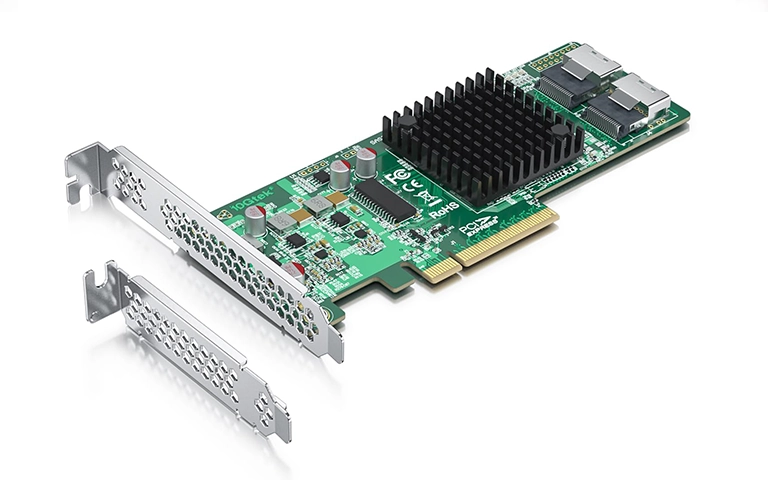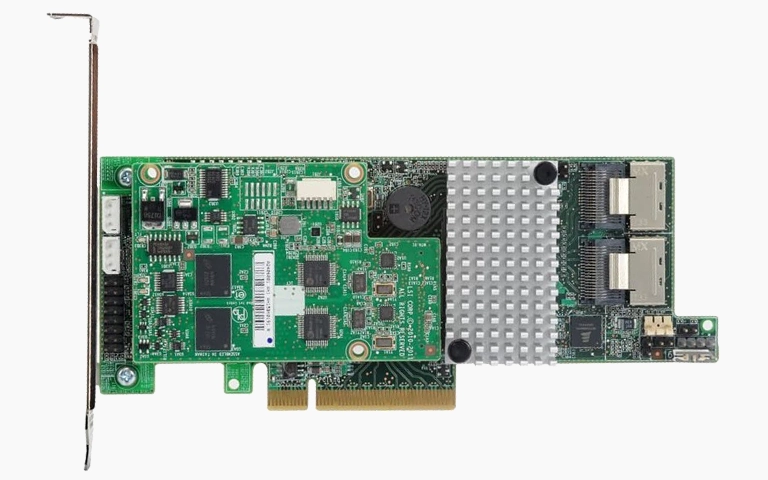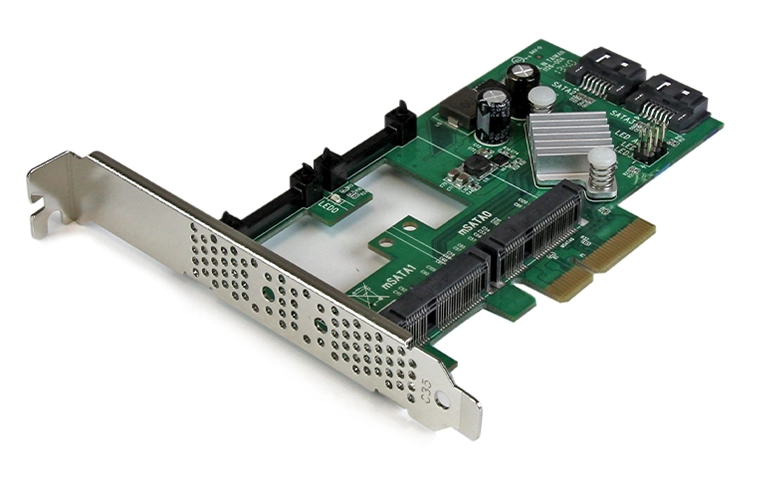Your RAID array’s reliability depends on more than just the drives. It relies on the controller that manages them. This small but powerful component determines how data is written, mirrored, and recovered across all disks.
But what happens when the controller fails or mismanages data?
In this post, you will learn how RAID controllers work, why they are vital for redundancy, and what steps to take if one fails.

Understanding the Role of RAID Controllers
A RAID controller is the central component that manages how data is stored and accessed across multiple drives in a RAID array. Its main function is to organize data, maintain redundancy, and ensure smooth communication between the operating system and storage devices.
In simple terms, the RAID controller acts as the link between your system and the drives. It decides how files are written, mirrored, or striped depending on the RAID level being used. Without it, drives would operate independently, and redundancy or performance balancing would not be possible.
Here is what a RAID controller does:
Disk Management: It distributes data across drives to enhance both speed and reliability.
Parity and Redundancy Control: It calculates parity or mirrors data to make recovery possible if a drive fails.
Types of RAID Controllers: Hardware vs. Software
RAID controllers come in two main types, hardware and software. Both perform the same core task of managing data across multiple drives, but they differ in how they process and control that data. Understanding these differences helps you choose the right setup for your storage environment.
Hardware RAID Controllers
These controllers are separate cards or chips installed directly on the motherboard. They handle all RAID operations independently from the operating system, which improves performance and reliability. Hardware controllers often include features like onboard cache memory and battery backup to protect data during power loss.Software RAID Controllers
Software RAID relies on the host system’s CPU and memory to manage the array. It is integrated within the operating system, making it a more affordable solution for small environments. However, because it uses system resources, performance may decrease under heavy workloads.
When comparing the two, hardware controllers are preferred for enterprise use due to stability and speed, while software RAID suits small servers or personal setups. For a deeper comparison of their functions, explore the differences between software and hardware RAID setups.

How RAID Controllers Maintain Data Redundancy
One of the most critical roles of a RAID controller is maintaining data redundancy. This ensures that even if one or more drives fail, your information remains protected and accessible.
The controller manages this process by distributing and duplicating data across multiple disks in a structured way.
Here are the main methods used to achieve redundancy:
Mirroring: Data is duplicated across two or more drives. If one fails, the other contains an exact copy. This is the method used in RAID 1.
Parity: Parity information is calculated and stored across drives to reconstruct missing data in case of a failure. This approach is common in RAID 5 and RAID 6.
Striping with Parity: Data and parity blocks are spread evenly across all disks, providing both performance and protection.
The controller continuously manages these processes, ensuring that data integrity is preserved even during read or write operations. Redundancy not only improves fault tolerance but also enhances performance in high-demand environments.
To understand how each RAID level uses these techniques, you can compare mirroring and striping methods in RAID 0 and RAID 1 or learn how parity levels in RAID 5 and RAID 6 enhance redundancy.
Common RAID Controller Failures and Their Impact
Even though RAID controllers are designed for reliability, they can still fail due to hardware or firmware problems. When a controller stops functioning properly, it can make the entire RAID array inaccessible, putting all stored data at risk.
Common reasons for RAID controller failure include:
Firmware Corruption: An interrupted or failed update can prevent the controller from initializing correctly.
Battery Backup Failure: Many hardware controllers rely on a battery to preserve cache data. If the battery fails, data can become corrupted.
Overheating or Power Surges: Excess heat or sudden power loss can damage the controller’s circuitry.
Physical Damage: Broken connectors or damaged interfaces can interrupt drive communication.
When a controller fails, the drives may still contain all your data, but without the correct configuration details, the array cannot be recognized.
Attempting to rebuild or reconnect drives without professional help can overwrite or damage existing data.
If you suspect your RAID controller has failed, review these real-world examples of RAID controller failure recovery or explore common signs of RAID failure and how to troubleshoot them.

Trust the experts with proven results
RAID Controller Recovery and Replacement Process
When a RAID controller fails, careful handling is essential to avoid data corruption. Each controller holds unique configuration data, so replacing it with the wrong model can make the array unreadable.
Check if the issue is with the controller or drives. Look for signs like damaged components, failed firmware updates, or cache battery issues.
Use an identical controller with the same firmware version. Small differences can prevent drives from being recognized correctly.
Never rebuild before imaging all drives. Rebuilding without a backup can overwrite existing parity data. Learn about the risks of rebuilding a RAID after controller failure.
At RAID Recovery Services, we perform diagnostics, match configurations, and recover data safely using non-destructive methods.
Replacing a RAID controller requires precision. When valuable data is at risk, always contact professionals for assistance.

Best Practices to Protect RAID Systems
Keeping your RAID system reliable starts with proactive maintenance and monitoring. A healthy RAID controller is essential for stable data performance and long-term protection.
Here are a few ways to prevent unexpected failures and data loss:
Monitor Controller Health Regularly: Use system utilities or monitoring software to check controller temperature, cache status, and firmware version.
Keep Firmware Updated: Outdated firmware can cause communication errors or data corruption. Always update carefully and follow manufacturer guidelines.
Use Reliable Power Protection: Connect your RAID setup to a UPS or surge protector to prevent voltage spikes and power interruptions.
Ensure Adequate Cooling: Maintain proper airflow and temperature to avoid overheating, which can damage both drives and controllers.
Maintain Regular Backups: Even with redundancy, a RAID array is not a complete backup solution. Keep an external or offsite copy of your data.
If your system shows warning signs like unresponsive arrays or missing drives, act quickly. Avoid performing rebuilds or firmware resets on your own. Instead, reach out to RAID Recovery Services for professional diagnostics and secure recovery support.
Fast turnaround times for business-critical data
Conclusion
A RAID controller is the core of every reliable storage system. It manages how data is distributed, ensures redundancy, and keeps your files accessible even when drives fail. However, once the controller itself malfunctions, the entire array can become unreadable, making professional help the safest way forward.
At RAID Recovery Services, we specialize in diagnosing and restoring data from failed RAID controllers, damaged arrays, and complex configurations. Whether the issue involves firmware corruption or controller replacement, our engineers handle every recovery step with precision and confidentiality.
Ready to recover your data? Contact RAID Recovery Services today to schedule an expert evaluation and restore your system’s integrity.

Frequently Asked Questions
What does a RAID controller do?
A RAID controller manages how data is distributed across multiple drives within a RAID array. It handles striping, mirroring, and parity calculations to improve performance and ensure redundancy, protecting your data even if one drive fails.
How does a RAID controller protect against data loss?
By managing redundant data storage, the controller allows your system to recover missing information when a drive fails. It uses mirroring or parity information to rebuild lost data, depending on the RAID level you use.
What happens when a RAID controller fails?
If the controller fails, your RAID configuration may become unreadable, and all drives could appear uninitialized. Even though the drives may still contain data, the system cannot interpret it without the controller’s metadata and configuration settings.
Can I replace a RAID controller myself?
Replacing a controller without professional help is risky. Each controller may store unique configuration data, and using the wrong model or settings can overwrite your array. It’s best to contact data recovery experts before attempting any replacement.
How can RAID Recovery Services help after a controller failure?
Our team specializes in recovering data from arrays affected by controller malfunctions. We image the drives, reconstruct RAID configurations, and emulate failed controllers to safely restore access to your files while preserving data integrity.